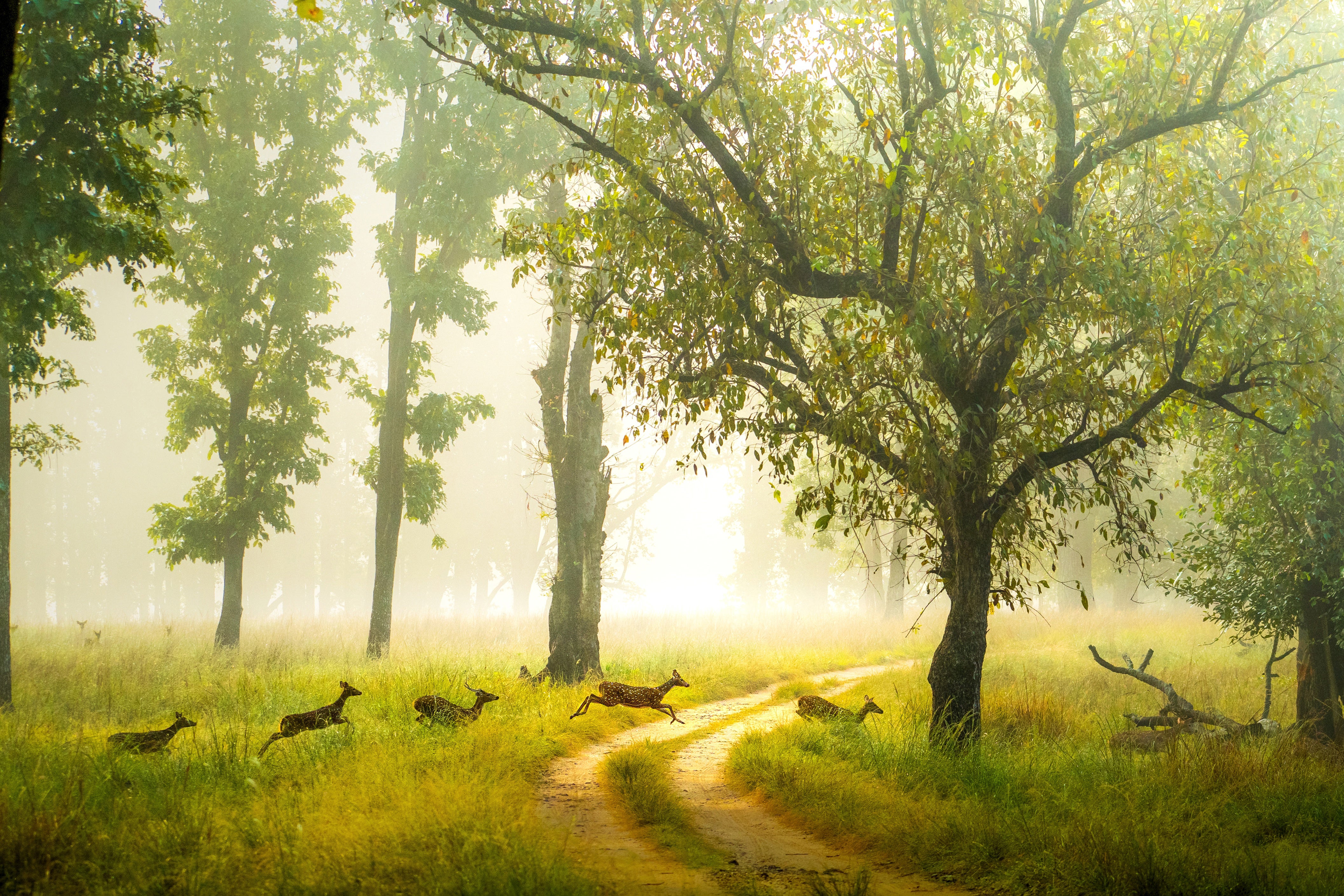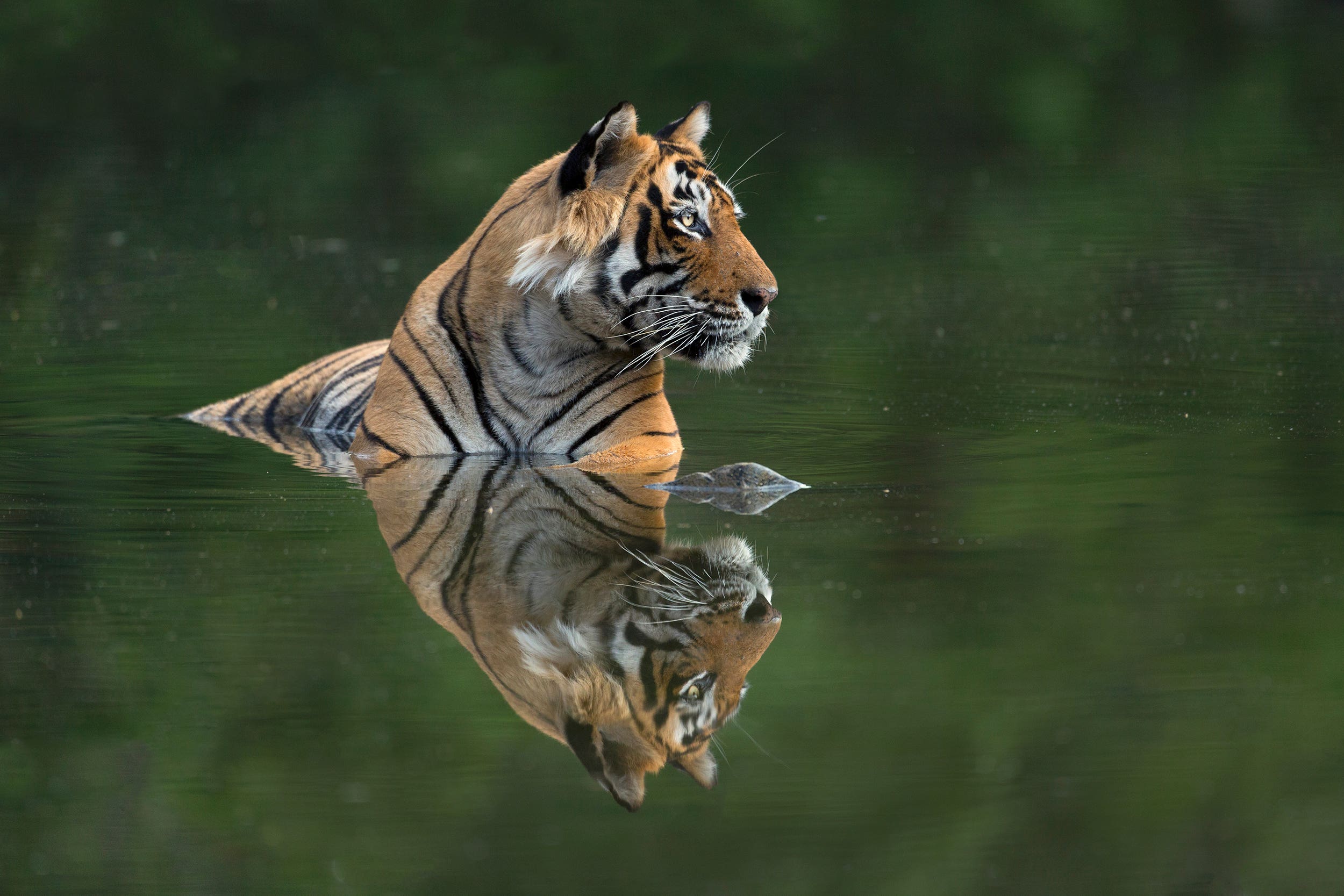Wildlife camera traps used to spy on and harass women in Indian national park, researchers say
Misuse of wildlife monitoring tech sparking concerns over both privacy and women’s safety
Your support helps us to tell the story
From reproductive rights to climate change to Big Tech, The Independent is on the ground when the story is developing. Whether it's investigating the financials of Elon Musk's pro-Trump PAC or producing our latest documentary, 'The A Word', which shines a light on the American women fighting for reproductive rights, we know how important it is to parse out the facts from the messaging.
At such a critical moment in US history, we need reporters on the ground. Your donation allows us to keep sending journalists to speak to both sides of the story.
The Independent is trusted by Americans across the entire political spectrum. And unlike many other quality news outlets, we choose not to lock Americans out of our reporting and analysis with paywalls. We believe quality journalism should be available to everyone, paid for by those who can afford it.
Your support makes all the difference.Wildlife camera traps and drones in one of India’s best-known forest reserves are being misused to spy on women, researchers say.
Forest rangers in Jim Corbett National Park in the northern state of Uttarakhand intentionally fly drones over local women to intimidate them and prevent them from collecting natural resources to which they have a legal right, a research paper, published in the journal Environment and Planning F, warned.
“The patriarchal gaze of the society has extended into the forest because of these cameras,” Trishant Simlai, a researcher at the University of Cambridge’s Department of Sociology and lead author of a report detailing these findings, told The Independent.
“Nobody could have realised that camera traps put in the Indian forest to monitor mammals actually have a profoundly negative impact on the mental health of local women who use these spaces,” Mr Simlai said.
Officials from Corbett Tiger Reserve, part of the wider national park, called the allegations that forest officers were misusing wildlife cameras “absurd”. Nonetheless, they said an investigation had been set up to look into the study’s claims.
Researchers conducted a 14-month study interviewing 270 locals in the villages around Corbett Tiger Reserve and found that this intentional snooping of women by misusing technology was aimed at controlling and restricting women’s access to the forest.
The women go there to collect firewood or to relieve themselves.
“These cameras, these drones, they’re taking pictures of people as well (besides the wildlife). So what happens to these pictures? India has one of the worst data protection laws. What is the accountability? What is the transparency here? What do they do with these pictures? They are not asking for consent of people,” Mr Simlai says.
The researchers also found that women now venture deeper into the woods to avoid surveillance and put themselves at greater risk of wildlife attacks.
The study, titled “The gendered forest: Digital surveillance technologies for conservation and gender-environment relationships”, also claimed that women, especially from marginalised communities, are being controlled by these surveillance methods, with some men even encouraging their use to prevent women from “straying” or wasting time in the forest.

“These findings have caused quite a stir amongst the conservation community. It’s very common for projects to use these technologies to monitor wildlife, but this highlights that we really need to be sure they’re not causing unintended harm,” Prof Chris Sandbrook, director of the University of Cambridge Masters in Conservation Leadership programme, who was also involved in the report, said in a statement.
“Surveillance technologies that are supposed to be tracking animals can easily be used to watch people instead – invading their privacy and altering the way they behave,” he added.
Uttarakhand has a recorded forest area of 38,000 square kilometres, making up 71.05 per cent of the state’s total area. Forests play a crucial role for women, particularly in rural areas, by supplying vital resources such as firewood and fodder for cattle.
The researchers highlighted an incident from 2017 when a photograph of an autistic woman in Corbett Tiger Reserve – with a total area of 1288.31sq km – went viral after being taken by a wildlife camera trap. Local men circulated the image to shame and control the marginalised community she belonged to.
“A photograph of a woman going to the toilet in the forest – captured on a camera trap supposedly for wildlife monitoring – was circulated on local Facebook and WhatsApp groups as a means of deliberate harassment,” Mr Simlai said.
“I discovered that local women form strong bonds while working together in the forest, and they sing while collecting firewood to deter attacks by elephants and tigers. When they see camera traps they feel inhibited because they don’t know who’s watching or listening to them – and as a result, they behave differently – often being much quieter, which puts them in danger,” he said.
“Accidents happen when tigers get surprised by our presence, we sing loudly before entering the forest and while collecting firewood, to let them know that we are here,” a local woman told researchers.
Munish Kumar, a local social activist with a rights organisation called Samajwadi Lokmanch, told The Independent that camera traps have been used to invade the privacy of women in the forest. “Women call the forest their home. Sometimes they also relieve themselves in the forest as people in the villages relieve themselves in the open. When a camera trap captures their pictures, it is an invasion of their privacy.”
Mr Kumar said there were ethical concerns surrounding the use of surveillance technology in forests. “When women go to a forest to collect resources like firewood where cameras are set up, but they are not informed about their presence, it is an invasion.”
Mr Simlai said the use of drones for surveillance in villages near the Corbett Tiger Reserve also reflects the entrenched caste dynamics and social inequities in the state. “The drone team (of the forest department) would first call the headman of a village and take permission from him before flying a drone if it is a village dominated by the landed elite or the upper caste.”
But “when it comes to a 100 per cent Dalit village, no permission is taken. They drive straight into the village, fly the drone wherever they want, and be very brazen about it”, he alleges. India’s 200 million Dalits, formerly untouchables, are placed on the lowest rung of a caste hierarchy and remain subject to widespread discrimination, despite the fact India abolished untouchability in 1955.

Saket Badola, the field director for Corbett Tiger Reserve, told The Independent: “These are absurd allegations. The intention of using these technologies is never to snoop on women. These cameras are put up in forest areas for wildlife monitoring, conducting wildlife censuses, and mitigating human-wildlife conflict.”
When asked about the allegations of forest rangers intentionally flying drones over local women to intimidate them, as alleged by the Cambridge researchers, Mr Badola said: “Drones are primarily used for rescue operations and to track wildlife movements, especially when animals are approaching villages. The purpose is entirely wildlife management.”
The Independent asked him whether there were any avenues available for villagers to report misuse of surveillance technology by forest officials. Mr Badola responded: “If these claims were true, don’t you think people would have brought them to our attention? There has been no such reporting to the administration.”
He added: “If people felt something was wrong or objectionable, they could have directly approached our staff, officers, the district administration, or even the police. These avenues are always available to them.”
He says that “camera traps have been in use since 2006. Over all these years, no such allegations or complaints have been brought to us by villagers”.

“If there is any substantiated evidence, we will investigate further. We will take action if anything is found.”
Rajiv Bhartari, a former director of the Corbett Tiger Reserve and former principal chief conservator of forests in Uttarakhand, urged officials to look into the researchers’ findings.
He told The Independent: “I don’t think that any camera traps have been put ever with design to capture images of people or restrict their movement. It’s not a part of the design, but misuse of images is always a possibility.
“Any progressive management should welcome research and the findings of the research because this knowledge is meant to improve conservation practice and make it more just.”

Join our commenting forum
Join thought-provoking conversations, follow other Independent readers and see their replies
Comments